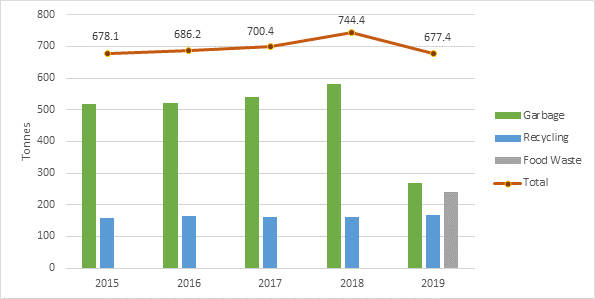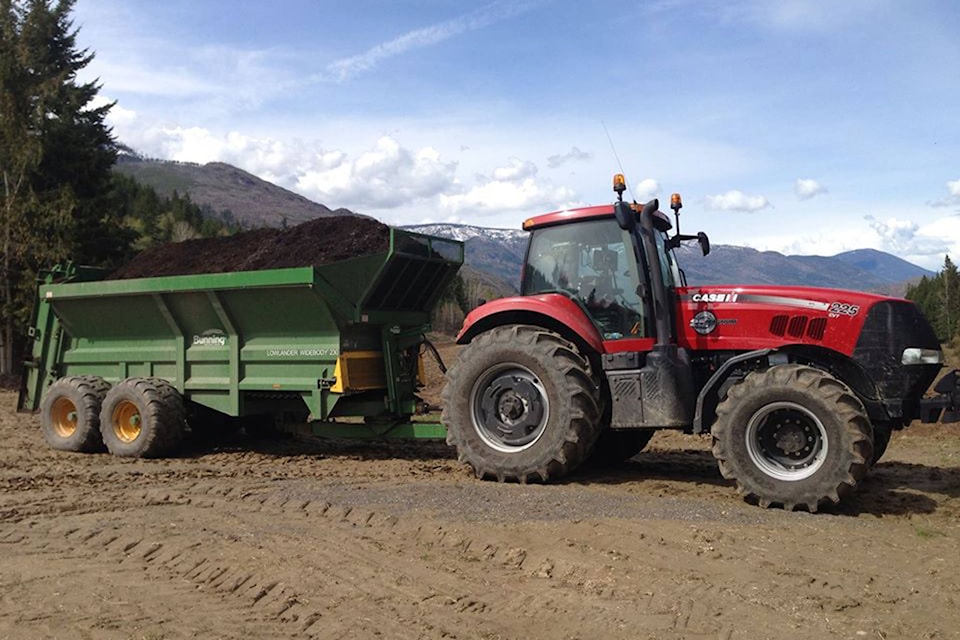Where does our food waste go after it has been picked up from the curb?
This was a question recently posed to the Observer by readers.
To answer this, we contacted the different people involved in the collection process, starting at the curb with SCV Waste Solutions.
From Monday to Friday, SCV has two trucks on the road (sometimes three, depending on demand). The trucks have two separate hauling compartments, allowing the driver to collect food waste and recycling one week, and food waste and garbage the next. The green food waste bins are picked up by hand and their contents dumped into the truck.
SCV administrator, Ashley Jager, notes food waste and recycling collection days tend to be longer for the drivers as Salmon Arm residents have been making good use of the recycling program. In addition, she says the introduction of food waste collection on July 1 has had an impact on the amount of garbage being picked up.
“With the new food waste program, we’re finding our garbage consumption is going way, way down,” said Jager.
After the food waste is collected, it is taken to a transfer station at the Columbia Shuswap Regional District’s Salmon Arm landfill. There, the waste is placed in a bin that is picked up every few days by Spa Hills Farm.
“This method cuts down on GHG emissions by reducing truck trips out to Spa Hills and back and allows efficient routing by our curbside collector,” explained City of Salmon Arm engineer Jennifer Wilson in an email.
Read more: Thirty businesses onboard with composting
Read more: Salmon Arm recycling, food waste bin roll-out sparks some questions
At Spa Hills, the food waste undergoes treatment through a process of aerobic digestion, lasting approximately 60 days. In that time, the material heats up and the heat is sustained long enough to be pasteurizing.
“This is different from the breakdown of material at the landfill,” said Wilson. “Landfill material breaks down via anaerobic digestion which is a much slower process. The ‘bugs’ responsible for anaerobic digestion release methane gas which is a more potent GHG gas then carbon dioxide.”
After that, the material is screened and cleaned of any existing contaminants. The end result is what’s qualified as Class A compost under B.C.’s Organic Matter Recycling Regulation.
“Then we apply it to our fields that we either grow corn on, wheat, alfalfa, a little bit of barley sometimes,” explained Spa Hills owner Josh Mitchell. “We put it to great use and we have a lot of organic farmers that are buying it now that are growing lots of different vegetables… It’s a great alternative to fertilizer.”

Mitchell points out composting is helping to prolong the life of Salmon Arm’s landfill. This is supported by what the CSRD and the City of Salmon Arm have recorded for the period of July 1 to Sept. 1, where 35.5 per cent of the waste picked up at the curb was bound for Spa Hills. Garbage amounted to 39.8 per cent, while 24.7 per cent was recycling. That means more than half of the total waste collected through Salmon Arm’s curbside program was diverted from the landfill.
“We consider these to be excellent diversion rates,” said Wilson.
